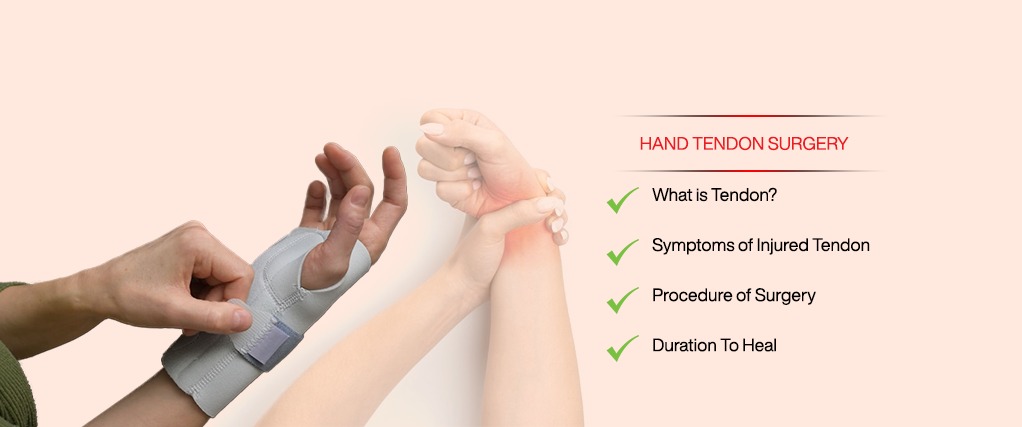
Hand is an important grasping organ of the body composed of various tissues that help a person to hold, feel and manipulate objects. It consists of four fingers and one thumb .All these digits are mobilized by different tendons which allow a variety of functions in various permutations and combinations.
Tendon is a structure which is composed of collagen fibres and attaches the end of muscle to its final insertion point, the bone. Its main function is movement across the joint it crosses. Due to its overuse or with advanced age they may suffer wear and tear, or an injury may result in their disruption leading to loss of their function.
Once you sustain an injury to tendon you may see that you are unable to make a tight fist. One may also notice an abnormal position of finger or thumb. The injury may be associated with trauma to upper limb (during road accident), or may be self inflicted (especially during wrist cuts/suicidal cuts) and loss of sensation over hand or loss of blood flow to fingers may also be noted alongside with tendon injury.
In case you have sustained an injury to upper limb or have complaints of abnormal/painful finger movements you should contact a Plastic Surgeon for your concern. Plastic Surgeons are trained in handling of these delicate structures as well as are well versed in microvascular repair of blood vessels /nerve injury which may be seen in a trauma case.
For the repair of tendons of hand, the procedure can be done as an outpatient procedure under regional block (anaesthetizing only the nerves to hand) or could require complete anaesthesia in case nerve and arterial repair is anticipated. Tourniquet is tied to reduce bleeding from surgical site. After exploration of the wound, the cut ends of tendons are identified, freshened and brought closer to each other and secured using sutures. Wound cavity is thoroughly washed and cavity is closed in layers. P.O.P slab is given to restrict movement across repaired site. In case the tendons are wide apart, a segment of tendon may be borrowed from nearby expandable tendons and used to fill in the gap.
Once a torn/cut tendon ends are freshened they should be repaired using non absorbable sutures, using at least 4 strand repair in a locking fashion. After the repair, hand is kept in functional position using P.O.P slabs so as to provide rest to the repaired site. As per the surgeon’s protocol, he may recommend keeping the slab for 4-6 weeks (by which time tendon would have regained sufficient strength).Hand physiotherapy is started and followed for achieving best results as per institute protocols.
A tendon having partial injury(less than 1/3 of its circumference) may have some healing. on its own, but in case there is a gap the healing will occur by fibrosis which does not allow the functionality of tendon work .If tendon injury is suspected one should always explore and repair the cut /torn ends of tendon using at least 4 strand repair in locking fashion to provide adequate strength during tendon healing.
Any surgical procedure is by its virtue, have some complications related to procedure. But in cases of tendon repair surgery the complications in post operative period could be due to excessive mobilization (leading to rupture of repair) or due to non mobilization ( leading to adhesions and non movement of repaired tendons) causing a failure of surgical endeavor. So it is of utmost importance to keep a strict follow up with your surgeon and follow their physiotherapy protocols to get optimal results.

Skinalaya is dedicated to skin care & aesthetic practices in a scientific & ethical way to promote skin care. It is located in the Rohini,Delhi,India. It has a tradition of being there for the last 10 years. We are serving the society to treat different skin ailments in ethical way. The clinic has seen dermatology growing from infancy to its present status.
At Skinalaya - Our constant endeavour is to make people look good in their own skin by enhancing their skin health. We at Skinalaya aim to build a dedicated centre of excellences envisaged to provide its patronage the most exclusive services to treat a wide spectrum of disease conditions ranging from acne to hair transplant.
To establish Skinalaya as one of Preferred Skin Care Centre using the latest technological advances with an emphasis on patient care and safety - delivering world class quality for patients.
